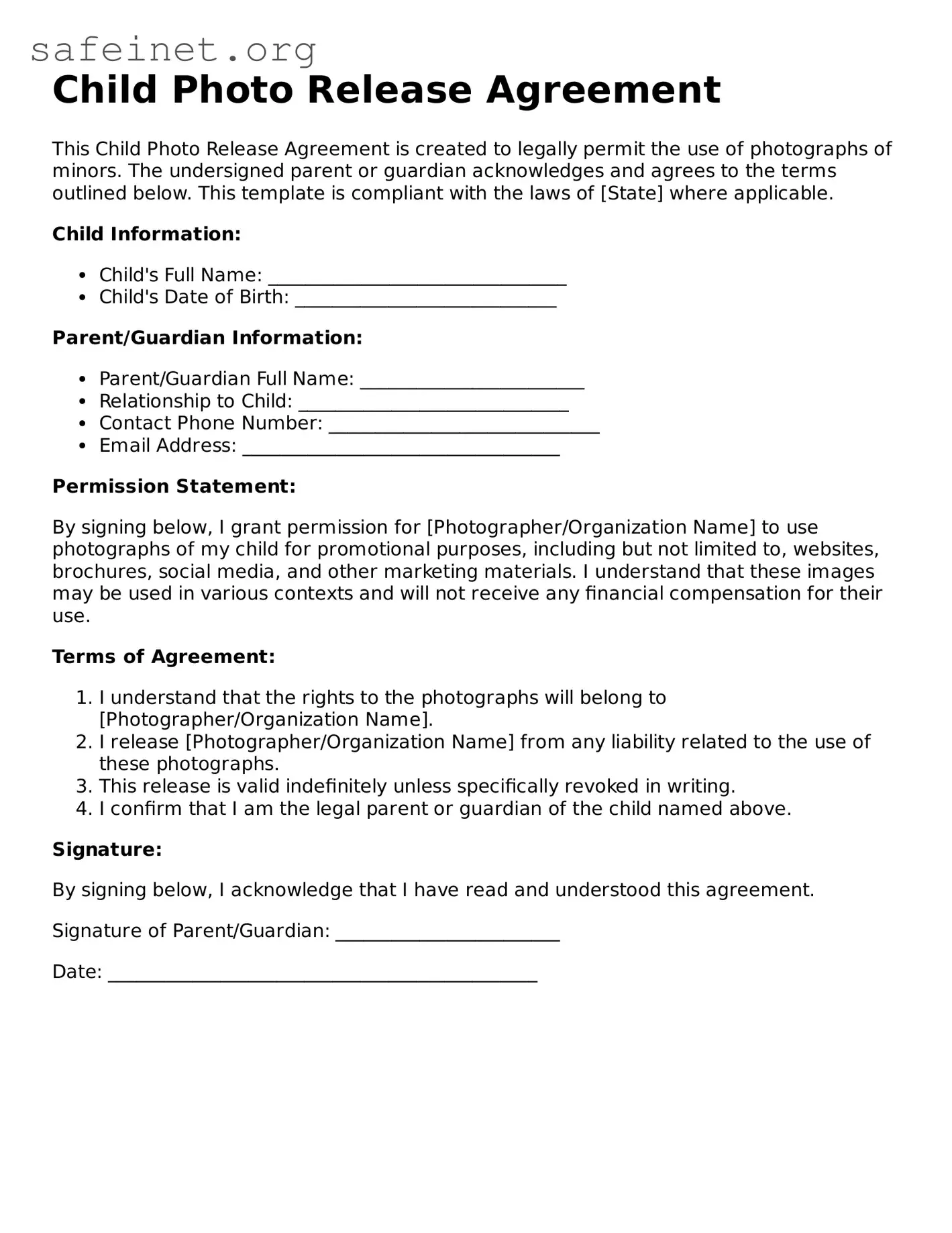What is a Child Photo Release form?
The Child Photo Release form is a legal document that allows parents or guardians to grant permission for a child’s photographs to be taken and used by another party. This could include schools, photographers, or organizations for purposes such as marketing, promotional materials, or social media. The primary aim of the form is to protect the rights of both the child and the parents or guardians involved.
Why is a Child Photo Release form important?
This form is crucial as it ensures consent is obtained before images of a child are captured or used. It helps safeguard personal privacy and prevents unauthorized use of a child’s image, which could lead to potential legal issues. Furthermore, obtaining proper consent promotes transparency between the parties involved.
Who should sign the Child Photo Release form?
Only a parent or legal guardian should sign the Child Photo Release form. This individual must have the legal authority to make decisions regarding the child’s image. The document should clearly outline the identity of the child and identify the signer as the appropriate decision-maker.
What information is typically included in the form?
A standard Child Photo Release form usually includes the child's name, date of birth, and the name of the parent or guardian providing consent. Additionally, it outlines the intended use of the photos, any expiration or limitations of the consent, and a signature section for verification. The form may also specify whether the consent is revocable at any time.
Can a Child Photo Release form be revoked?
Yes, a signed Child Photo Release form can typically be revoked by the parent or guardian. It is essential to inform the party that has obtained the consent that the permission is withdrawn. However, revocation may not apply to images that have already been distributed or published prior to the notice of revocation.
How does a Child Photo Release form protect the child?
The Child Photo Release form offers protection by ensuring that families maintain control over how their child's image is used. It prevents the possibility of exploitation and misuse of a child’s likeness. Additionally, it provides a clear understanding to all parties about how and where the images will be utilized.
Are there any legal consequences if someone uses a child’s image without consent?
Yes, using a child’s image without proper consent can lead to legal repercussions. Parents or guardians may have the right to take legal action if they believe their child’s privacy has been violated. This could include claims for damages or injunctions to stop further use of the images.
Is it necessary to use a Child Photo Release form for every photo?
While it is not legally required for every single instance, using a Child Photo Release form is considered best practice, especially for professional photography or public use. For informal personal uses, such as family photos, the form may not be necessary, yet getting consent remains a prudent approach.
What should be done if a Child Photo Release form is lost?
If a Child Photo Release form is lost, it is advisable to secure a replacement. This can be achieved by asking the signer to complete a new form. Keeping several copies in different locations can help minimize the risks of loss in the future.
